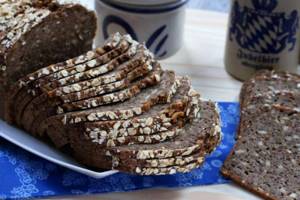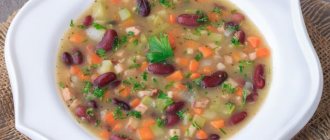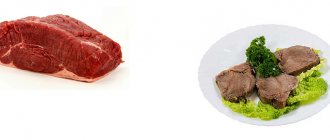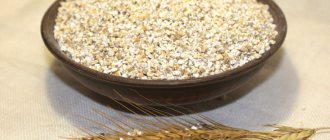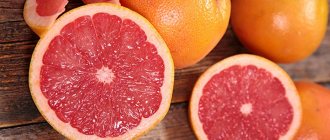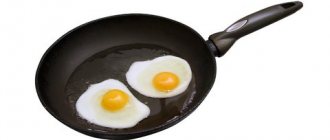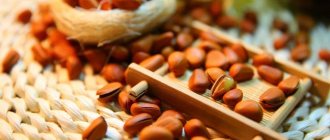Carbohydrate content in bread
Bread is a product that contains a large amount of carbohydrates. They are divided into two main groups. Among them are simple and complex. The largest amount of simple carbohydrates is found in products made from wheat flour.
It is not recommended to use them during weight loss due to the glycemic index, which contributes to a rapid increase in blood sugar levels. When it enters the body in excess, carbohydrates are converted into adipose tissue.
The body receives complex carbohydrates from rye or whole grain bread. To convert them into energy, the body requires more time due to the launch of complex biochemical processes. As a result, there is a slow increase in glucose in the blood and the body spends this energy only on the work of the brain, muscles and internal organs.
CARBOHYDRATES
- BREAD
- GREATS AND PASTA PRODUCTS
- SUGAR
- CHOCOLATE
Carbohydrates
– these are organic compounds that are the basis of plant products. Plants have the ability to convert solar energy into chemical energy through photosynthesis. In the human body, solar energy is released due to the breakdown of carbohydrates, which also produces the main products from which plants synthesized carbohydrates, i.e. carbon dioxide and water.
Carbohydrates are organic compounds of carbon, hydrogen and oxygen, and hydrogen and oxygen are present in them in a 2:1 ratio, as in water, hence the name carbohydrates .
The importance of carbohydrates in human nutrition is very high. They provide up to 70–80% of the total calorie intake. The ability of carbohydrates to be a highly efficient source of energy underlies their protein-sparing properties.
actions. When a sufficient amount of carbohydrates is supplied with food, amino acids are used only to a small extent in the body as energy material and are utilized mainly for various plastic needs.
The minimum daily amount of carbohydrates should not be less than 50–60 g. The optimal consumption of carbohydrates is 55–65% of the daily calorie intake, which corresponds to 300–500 g. Excessive carbohydrate consumption leads to the development of obesity.
Hyperglycemia
(excess blood sugar), caused by the consumption of a significant amount of
easily digestible carbohydrates in food,
which include various types of sugar, preserves, jellies, jams, compotes, jelly, curd mass and cheese curds, ice cream, various types of sweets, pastries, pies and other confectionery products, canned juices, fruit waters, as well as honey, leads to irritation of the insular apparatus of the pancreas and increased release of the hormone into the blood.
As a result, systematic consumption of excess easily digestible carbohydrates can lead to depletion of the insular apparatus and contribute to the development of diabetes mellitus.
At the same time, when a significant amount of sugars is consumed with food, they cannot be completely deposited in the form of glycogen, and their excess is converted into triglycerides, contributing to the increased development of
adipose tissue.
Increased levels of insulin in the blood accelerate this process, since insulin has a powerful stimulating effect on
lipogenesis
(the formation of adipose tissue).
Excessive consumption of easily digestible carbohydrates is one of the leading causes of the development of the nutritional-metabolic
(food) form of obesity. From an energy point of view, the conversion of carbohydrates into fats should be considered as the deposition (accumulation) of energy, although the synthesis of fat is accompanied by the expenditure of energy, which is again released during the oxidation of fats in the body. Limiting the consumption of easily digestible carbohydrates is of particular importance in people suffering from atherosclerosis and other cardiovascular diseases.
Slowly digestible foods
containing starch and glycogen, should make up 80–90% of the total amount of carbohydrates consumed, i.e., on average 300–400 g per day. The proportion of quickly digestible sugars should not exceed 10–20% (50–100 g per day).
Sources of slowly absorbed carbohydrates:
bread, bakery products, flour, various cereals, pasta, potatoes.
Carbohydrates also contain ballast substances that are not digested in the gastrointestinal tract.
Ballast substances cannot serve as a source of energy and plastic material, but they play a primary role in the formation of feces. This circumstance, as well as the pronounced irritating effect of cell membranes on the mechanoreceptors of the intestinal mucosa, determine their leading role in stimulating peristalsis and regulating intestinal motor function.
A deficiency of ballast substances in human nutrition leads to a slowdown in intestinal motility, the development of stasis and dyskinesia.
Diets should contain sufficient amounts (at least 25 g) of cellulose (fiber) and other indigestible polysaccharides, the source of which are various plant products. Enriching the diet with fiber is of particular importance in old age and in people prone to constipation. Along with its participation in the regulation of intestinal motility, fiber has a normalizing effect on the motor function of the biliary tract, stimulating the processes of bile excretion and preventing the development of congestion in the liver and gall bladder. Ballast substances also remove excess cholesterol from the body.
All products of plant origin, without exception, are a source of fiber. The highest content of cell membranes is observed in wholemeal flour, millet, beans, green peas, dried fruits (especially prunes), and beets. Buckwheat and carrots also contain significant amounts of cellulose. Rice, potatoes, tomatoes, and zucchini are characterized by a low content of it.
Plant products also contain pectin substances,
having the ability to adsorb various wastes, including exo- and endogenous toxins, heavy metals. This property of pectins is widely used in therapeutic and preventive nutrition (carrying out fasting apple days in patients with colitis and enterocolitis; prescribing marmalade enriched with pectin for the prevention of lead intoxication, etc.). Pectin substances are found in fresh fruits, roots, leaves and green parts of the stem. The largest amount of pectin substances is found in apples, plums, black currants and beets.
The ability of pectin substances in the presence of organic acids and sugar to form jelly (jelly) is widely used in the confectionery industry in the production of jams, jam, marshmallows, marshmallows, marmalade, etc.
The biological value of bread is directly dependent on the grade of flour milling associated with the removal of certain parts of the grain. The coarser the grind of the flour from which the bread is made, the more bran it contains, the better it is accepted by the body, because it contains fiber, microelements, enzymes, etc. substances necessary for the body. Bread proteins contain most of the amino acids the body needs.
Bread lingers in the stomach for quite a long time and is evacuated from it after 3–4 hours (potatoes after 2–3 hours). Bread proteins in the digestive tract secrete 3 times more proteolytic enzymes than milk proteins.
Bread made with yeast contributes to the development of dysbacteriosis,
because once in the intestines, the yeast continues the process of alcoholic and lactic acid fermentation. Yeast bread activates the growth of tumors and mold in the intestines. White bread in combination with protein foods promotes the formation of fecal stones, increasing the body's sludge load. It is better to use day-old or dried bread that does not contain active yeast.
Cereals made from various grains (wheat, barley, rice, buckwheat and other crops), as well as pasta (pasta, vermicelli, noodles) serve as a source of well-digestible carbohydrates. The proteins of cereals and pasta, as well as the proteins of cereals, are relatively complete.
The amount of fiber in some cereals varies depending on the degree of polishing of the cereals, and in pasta - on the type of flour. This also applies to digestibility.
Oatmeal, rolled oatmeal, oatmeal.
Oats have an optimal ratio of proteins, fats, carbohydrates and B complex vitamins. The high fat content of oatmeal puts them in first place in terms of calorie content among other cereals.
All types of oatmeal, when properly boiled, produce a significant amount of mucous infusion, so in case of heavy metal poisoning, oatmeal without milk is recommended. Oatmeal proteins are useful for liver and heart diseases. Oatmeal has a general strengthening effect on the body, helps restore the rhythm of cardiac activity, and is indicated for constipation, allergies, gastritis, ulcerative processes, etc.
Semolina.
Contains quite a lot of iron and galium - a microelement that is included in the membrane of red blood cells and is an important component of blood.
Corn grits.
They are distinguished by their high protein content. They are able to sharply inhibit the processes of fermentation and putrefaction in the intestines. Boiled corn does not ferment for 48 hours. Corn cereals contain a lot of iron, copper, and nickel, which has a beneficial effect on hematopoiesis.
Buckwheat grain.
It is characterized by a high content of fiber, iron and proteins with a favorable ratio of amino acids. Indicated for diseases of the liver, nervous and cardiovascular systems. It promotes normal hematopoiesis. Buckwheat's dietary fiber inhibits the absorption of starch, so it is recommended for patients with diabetes.
An important advantage of buckwheat is that buckwheat fields are not treated with pesticides.
Millet.
Contains a lot of nicotinic acid, copper, nickel, manganese and zinc. The disadvantage of millet is that the fats it contains oxidize quite quickly, and the grain acquires a bitter taste.
Fresh millet improves fat metabolism and is recommended for diseases of the liver and cardiovascular system. Stimulates hematopoiesis, strengthens body muscles, improves stomach function. Helps cleanse the maxillary sinuses.
Pearl barley and barley cereals.
Produced from barley. They contain a large amount of fiber, so they are indicated for obesity and constipation. The iron and folic acid they contain stimulate hematopoiesis.
Rice.
Easily and quickly digested. Does not linger in the stomach for long, weakly stimulates gastric secretion. Indicated for diabetes and urinary tract diseases. It has a general strengthening effect and improves the functions of the skin.
Sago.
It is produced from starch and is used for diseases of the gastrointestinal tract to make soups. Natural sago is obtained from the starch of sago palms. Potato sago has very little protein.
Bran.
Contains 50% ballast substances, more proteins, fats and carbohydrates than wheat flour. The high nutritional and biological value of bran is explained by the fact that during the conventional grinding of wheat, its entire germ layer is contained in it. They also contain a lot of microelements (potassium, sodium, calcium, magnesium, phosphorus, iron, copper, nickel, cobalt) and vitamins (B 1, B 2, P, PP, E, pantothenic acid, inositol). Bran can heal the intestines, resist atherosclerosis, help more complete and rhythmic emptying of the gallbladder, and have a beneficial effect on the nervous system. Bran is recommended for diabetes and metabolic disorders.
Sugar is used as a flavoring and nutritional product. During the refining process, essential mineral salts and vitamins are removed from sugar. Despite its easy digestibility and calorie content, its use should always be moderate, and in case of diabetes and obesity, sugar is generally excluded from the diet.
The end product of sugar digestion is carbon dioxide, which binds the bases of blood and tissue salts, as a result of which the blood and tissues are demineralized, the calcium balance is disturbed, which leads to withering of all body tissues, creating favorable conditions for the development of osteochondrosis, and decreased immunity. Sugar reduces the secretion of gastric juice and delays gastric emptying.
A diet high in sugar promotes water retention in the body, increasing swelling, which complicates the course of diseases with circulatory disorders of various etiologies and inflammatory processes; the formation of excess cholesterol with all the ensuing consequences. Sugar causes overexcitation of the cerebral cortex; aggravates the phenomena of vegetative dystonia; promotes sensitization, i.e., increased allergic reactions.
In small quantities, sugar activates the detoxifying function of the liver. Its daily dose should not exceed 20–30 g.
Saccharin, sorbitol and xylitol.
Recommended as sugar substitutes for patients with diabetes and obesity. Sorbitol and xylitol do not affect blood sugar levels. The advantages of xylitol compared to sorbitol are its better taste and the effect of a dose that is half that of sorbitol. Xylitol has choleretic and laxative properties to a greater extent. But side effects of sugar substitutes on the body have also been noticed: xylitol impairs vision, and saccharin can cause anemia and reduce cardiac activity.
Honey.
The most valuable concentrate of sun rays. It consists of 75% sugars, and its contribution to the body’s nutrition is primarily energy. The simple sugars in honey are easily and quickly absorbed by the body. A spoonful of honey provides 60 calories, which are converted into energy faster than any other food product. This can be tested by drinking a glass of warm water with a teaspoon of honey, which will immediately relieve physical or mental fatigue.
Honey is a product rich in information. Every drop of it is the collective work of bees and plants. It contains many microelements and vitamins - in almost the same concentrations as in the human body. Thanks to all this, honey is able to have a therapeutic effect on various organs.
Honey retains the nutritional and medicinal properties of the plants from which it is collected, and each type of honey has its own therapeutic properties.
Mountain honey, linden, oregano, and thyme are recommended for damage to the upper respiratory tract (rhinitis, sinusitis, bronchitis).
Honey from field herbs, fruit crops and chestnuts cures urinary tract diseases.
Steppe, forest, lavender, mint honey helps with heart and gastrointestinal diseases, neuroses.
Honey should be stored at a temperature no higher than 10 °C and not heated, since already at 37 °C it loses many of its healing properties.
Honey is an excellent substitute for sugar. You need no more than 3 teaspoons of honey per day to give the body the required amount of sugars.
Marmalade.
Prepared with beet pectin, it has a pronounced ability to adsorb heavy metals in the intestines, forming insoluble pectins. Apple pectin has better properties in this regard. Marmalade is recommended to be taken instead of sugar for colitis accompanied by diarrhea.
Maltose molasses.
Made from corn flour, millet and other grains. Can be used instead of sugar for liver diseases and heart failure.
It has high nutritional value, specific taste and aroma. It is prepared from cocoa beans. A small amount of chocolate quickly restores energy expenditure after physical activity. But the restriction of chocolate in the diet is dictated by its high content of oxalic acid, which binds the iron found in chocolate. It also contains large amounts of caffeine and theobromine, which stimulate the nervous system. The high potassium content is an indication for the use of this product during vigorous activity and conditions associated with increased potassium loss.
Table of contents
What happens if you completely give up bread?
With a complete and rapid refusal of carbohydrates, the development of pathological reactions from the body is possible. Among them are:
- Incessant headache. A complete refusal of bread can lead to a lack of carbohydrates in the body, from which glucose is produced, which is a source of energy. The brain is one of the organs that primarily responds to a lack of nutrients.
- Constant fatigue due to insufficient energy supply.
- Tendency to depression. Low glucose levels cause insufficient serotonin production. In the initial stages, the patient may experience depressed mood and constant anxiety, which is replaced by unmotivated aggression and depression.
- Disorders of the digestive tract. Avoiding bread leads to insufficient fiber intake. As a result, intestinal motor function decreases and the likelihood of fermentation and dysbacteriosis increases.
- Constant feeling of hunger. Lack of glucose in the body leads to a constant feeling of hunger. To reduce the severity of this symptom, it is necessary to consume a sufficient amount of complex carbohydrates.
- Hormonal imbalance.
Calorie content and nutritional value of various types of bread
Different types of bread differ not only in composition, but also in nutritional value.
Read: How to take quail eggs: their benefits at any age
Table 1. Amount of BJU and Kcal in different types of bread.
| Product | Kcal | Squirrels | Fats | Carbohydrates |
| Wheat bread | 266 | 7,7 | 2,4 | 53,4 |
| Rye bread | 224 | 4,7 | 0,7 | 49,8 |
| Grain bread | 215 | 8,5 | 1,6 | 38,58 |
| Armenian lavash | 258 | 9,2 | 1,1 | 58,2 |
We invite you to watch a video with tips on what kind of bread you should eat to avoid gaining weight:
https://www.youtube.com/watch?v=SEV7RrLZiuo
Macro and microelements in bread
High-quality bread contains the necessary macro- and microelements, as well as vitamins, which ensure the full functioning of the body.
The greatest amount of useful substances is found in products with bran or made from whole grain flour.
The daily intake of bread contains the maximum amount of selenium. This microelement is necessary for the full functioning of various biochemical processes.
When whole grains are included in the diet daily, up to 30% of manganese is replenished, which acts as an antioxidant necessary for metabolic processes in mitochondria.
In addition, with sufficient intake, metabolic processes with carbohydrates, proteins and cholesterol are restored. Bread can provide up to 5% of the daily value of such substances as calcium, phosphorus, iron, magnesium, sodium, zinc and copper.

Types of products
There are many varieties of bread sold on store shelves, which differ in composition and preparation recipe. Today the following options are most in demand:
- - a product of Georgian cuisine. In the process of its preparation, only two ingredients are used - water and flour. Thanks to this, the product has minimal thickness and a bland taste.
- Lunch
is a loaf that is prepared according to a classic recipe using familiar ingredients (water, flour, salt and yeast). During the cooking process, special additives can be added that improve the structure of the product, but do not change its composition. - Matzo
is a kind of pita bread that has a slightly different shape and taste. In this case, matzo is also prepared using water and flour. - Naan
is a flatbread originally from the East, which is often mistakenly called pita bread. - Chapatis
are breads from India that contain only water and flour. During the cooking process (frying in a frying pan), the products swell and receive their final shape.
Vitamins in bread
In addition to beneficial microelements and fiber necessary for the normal functioning of the digestive tract, the composition contains a large amount of vitamins.
Their maximum quantity is presented in products made from rye flour and in wheat products that have undergone careful processing.
The most common vitamins include:
- B1 or thiamine. It is involved in strengthening the nervous system, which reduces the body's susceptibility to stress, as well as high mental and emotional stress. Against the background of its regular intake into the body in sufficient quantities, muscles are strengthened, including in the heart.
- B2 or riboflavin. This vitamin is involved in the full functioning of the endocrine and nervous systems, as well as erythropoiesis. With insufficient intake of riboflavin, the development of insomnia and nervous tension is noted.
- B3 or nicotinic acid. The maximum amount of nicotinic acid is contained in products made from rye flour. Against the background of its regular intake into the body, not only a sufficient amount of energy is produced, but also the condition of the skin improves. Patients have a reduced risk of developing diabetes.
- B5 or pantothenic acid. In addition to participating in all biochemical processes, pantothenic acid is involved in strengthening the immune system and improving heart function.
- Vitamin E. Thanks to its sufficient intake into the body, the condition of hair and nails, as well as the skin, improves.
Other utility indicators
Many diets exclude white bread and include black bread or completely limit its consumption. After all, everyone knows that white bread contains more calories than black or gray bread. But the table shows that the calorie content of white and black bread is approximately the same. As it turned out, in addition, beneficial properties and harm depend on its composition, glycemic index, and freshness.
Each bread has its own glycemic index. The glycemic index of a product indicates the rate of breakdown of carbohydrates - the lower it is in a product, the healthier this product is. For example, in wheat bread made from higher varieties of wheat it is high, and in rye bread with bran it is low. The more bran and whole grains in bread, the slower it is broken down by the stomach.
Fresh bread is digested faster, which means its carbohydrates are broken down faster, which leads to the appearance of unnecessary fat in the body.
Yeast-based bread, although not very healthy, is not that harmful. Its main drawback can also be its rapid breakdown in the body - bread without yeast is digested much more slowly, which reduces the risk of obesity.
You may be interested in: Smoked meats: types, classification, preparation

Is it possible to eat bread when you are losing weight?
Most people who decide to lose weight first eliminate or minimize the amount of bread from their diet. Complete cessation of its use leads to a negative effect on the body.
Read: Calcium content in food: eating for health benefits
This diet product is capable of:
- Positively influence digestive function due to fiber. As a result, waste and toxins are removed.
- Stimulate the breakdown of fats, since the process of their destruction is triggered by carbohydrates. In addition, in addition to simple carbohydrates, the composition also contains complex carbohydrates. They provide a feeling of fullness for a long time.
- Replenish the amount of vegetable protein, which acts as a building material for cells, as well as vitamins and minerals.
- Produce endorphins and serotonin due to the taste of the product. It is necessary to take into account that different types of bread have different glycemic index - an indicator indicating the duration of absorption of the product. When dieting, it is important to select varieties with a low glycemic index, which are absorbed from the digestive tract for a long time and do not provoke appetite. These include Borodinsky or whole grain bread, while white bread must be completely abandoned.
In addition, to lose weight, you must follow several basic rules when consuming baked goods while losing weight. Among them are:
- Elimination of other carbohydrates when including bread in the diet. To reduce body weight, it is recommended to combine it with protein foods.
- Limit a single dose to 100 grams, in order not to exceed the permissible number of calories.
- Avoid product in the evening.
- Creation of fasting days with its complete exception.
White bread
Bread began its existence in Egypt and was initially considered food for the wealthy. Unfortunately, this product only replenishes a person’s caloric needs, but does not provide any particular benefit. Although the nutritional value of this bread is high, it mainly consists of water, flour and yeast. It can be prepared from premium, first or second grade flour. If desired, banana, potato and other vegetables are included in it in order to change the usual taste.
100 grams of white bread contains more than 30% of the daily value of vitamins B1 and B3, iron and sodium, as well as about 50% of the daily value of manganese and selenium.
The disadvantages of this bread include a high glycemic index, which promotes the formation of fat in the body, and in women leads to cardiovascular diseases. It contains a large amount of harmful starch and gluten. As it becomes clear, wheat bread has a high calorie content and limited beneficial properties.
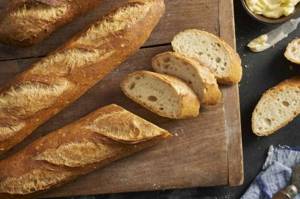
Bread for children, which is better, in what quantities
The preparation of a daily diet for children must comply with standards that will ensure full physical and neuropsychic development. The supply of sufficient energy, various vitamins and microelements prevents developmental delays and the formation of vitamin deficiency.

Bread is one of the products that should be present in the diet every day. They are included in the child’s menu from one year old. It is recommended to start complementary feeding with white bread, as it is easily absorbed and digested.
By the age of one and a half years, rye bread is also added to the menu. It is one of the healthier products compared to wheat, as it contains a sufficient amount of B vitamins, dietary fiber, and plant proteins.
The daily norm for children under one and a half years old should not exceed 20 grams of rye bread and 40 grams of wheat. From one and a half to three years, 30 and 60 grams. If baked goods, such as cookies or rolls, are added to the child’s menu, the amount of wheat bread is reduced.
Compound
As you can see from the list above, the main ingredients are bread and water. To give the loaf its shape, yeast is added to the composition, thanks to which the structure becomes porous, and the loaf itself becomes lush and voluminous. Also, in many types of loaves, the use of salt, spices, seeds and salt is mandatory. When adding a roll to their diet, people who watch their figure often ask questions about the content - how much protein is in white bread, whether it contains vitamins and microelements.
The benefits of the product depend on its composition. Let's highlight each of the ingredients:
- Refined flour
. When making white bread, a special product is used from which “ballast elements” have been removed. But at first glance they are not needed. It is the separated part that contains the largest amount of vitamins and microelements. The first thing that is removed during the purification process is the germ, which is considered the most useful element (it contains tocopherol and a number of other vital elements). The reason why the germ is removed is its short lifespan, which is why the finished product quickly deteriorates. At the next stage, the bran is removed - the shell of the plant, which is considered the main supplier of fiber. It also contains mineral elements and B vitamins. At the final stage of processing, the aleurone grain layer is removed, which contains the most valuable protein for the body (globulins and albumins). That is why, when asked about the nutrients in bread (how much protein, for example), many nutritionists shrug their shoulders - there is almost none there. What remains is pure starch, excessive consumption of which leads to excess weight gain. As for vital elements, they are removed at the purification stage. - Nutritional supplements
. The main task of the seller and manufacturer is to sell the product. To extend the lifespan, preservatives are added to bread, namely sorbic acid, which is characterized by increased resistance to yeast. In addition, almost all manufacturers include flavorings and food coloring. Proper grain storage is key to the quality of bread. In practice, this is an expensive pleasure, so the product is stored without complying with the required standards, and over time it deteriorates and rots. Such grain is cheaper for the manufacturer, so he buys it and adds improvers, as well as other additives - antioxidants and anti-caking agents. But even this is not all. Before making bread, flour is bleached using a group of chemicals - benzene and calcium peroxide, chloride dioxide and others. Few people know, but many of the elements are used in the manufacture of household chemicals. A number of manufacturers go even further - they tint the flour with titanium oxide, which is hazardous to health. Experienced bakers claim that the only “safe” white bread is a brick with a flat top. All other types of product contain improvers that enhance the effect of gluten. Confectionery products mostly consist of 30-50% of such additives. Moreover, the final product has nothing to do with substances beneficial to the body. - Vegetable oils
. It is no secret that the oil contains Omega-3 fats and vitamins that are beneficial for the body. But when heated, the opposite situation occurs - carcinogens are formed that poison the body. - Milk and eggs
. Healthy products are added to some types of loaf, including milk and eggs. But not everything is smooth here either. Experts working in this field talk about the presence of antibiotics and hormones in the ingredients. It is possible to eliminate the danger only if you use country milk and eggs for cooking. - Salt
. Adding salt to bread is not only due to the desire to add flavor to the product. It is this ingredient that prevents the softening of gluten and prevents deterioration of elasticity and weakening of the dough. For this reason, a large amount of salt is often added to the loaf, especially when low-quality or stale flour is used for production. In practice, making bread without salting is possible, but the highest quality flour must be used.
Bread for the elderly
For elderly people, it is necessary to carefully consider the preparation of the daily menu. In many ways, nutritional habits change due to age against the background of acquired diseases and changes in the functional activity of the digestive tract.
Read: How to eat carrots to get maximum benefits
First of all, it is necessary to take into account the presence of acquired pathologies. Among them, the most common are type 2 diabetes mellitus, colitis and gastroduodenitis of various origins.
Diabetes requires daily menu control, and white bread and various baked goods have a high calorie content due to simple carbohydrates.
Changes in the functional activity of the digestive tract are associated with a decrease in motor function. In addition, as patients age, they lead a sedentary lifestyle, which increases the risk of developing constipation.
To prevent abdominal pain and accumulation of feces in the intestines, preference should be given to products with coarse fiber. This can be whole grain rye bread in small quantities.

General tips for use
White bread is rich in calories, so it is very beneficial for athletes after training - at this moment, the open “carbohydrate” window is ready to accept any amount of calories and absorb it without storing it as fat reserves. In addition, 25 grams of meat contains as much protein as the protein in bread. However, eating bread for those leading a sedentary and passive lifestyle will not provide any benefit - it will only create a feeling of fullness for a short time, after which the feeling of hunger will wake up again.
Bread made from whole grains and wholemeal flour is very healthy and enriches the body with only useful things. However, it is considered a rather coarse product, which can complicate digestion in case of problems with the gastrointestinal tract and worsen a person’s already painful condition.
Rye bread is the best option. It is very popular both among athletes and people leading a healthy lifestyle. In addition, it is much healthier if prepared using sourdough. It can help with dysbiosis and stomach diseases.

Harm from bread
Despite the benefits that bread has when entering the body, there are also negative factors associated with its consumption. Its harm depends on the type of product that is introduced into the human diet.
When eating white bread, the following are distinguished:
- Increased blood viscosity.
- Disturbance of intestinal microflora. Excessive intake of products made from wheat flour enhances the fermentation process and slows down peristalsis, which provokes constipation, discomfort and pain in the abdominal area.
- Metabolic disorders, as well as an increased risk of obesity. White bread is considered a high-calorie product with a low content of vitamins and microelements. This is due to the high degree of processing of wheat grains and the loss of useful substances with waste particles.
When eating rye bread, the following are distinguished:
- Digestive disorders associated with the presence of coarse fibers.
- Irritant effect of the product on the gastric mucosa. If consumed regularly in large quantities, it can cause heartburn, stomach pain and belching due to increased acidity.
- Reduced absorption of nutrients due to coarse fiber contained in the composition.
- Digestive disorders due to gluten intolerance.
The harm of white bread
When baking bread, various additives can be added to it to improve the taste or appearance. The E300 additive increases the volume of the dough and improves the taste, E406, E407, E440 help the bread remain soft for a long time.
The main reason why white bread is considered unhealthy is its high glycemic index and high calorie content. Energy manages to very quickly turn into fat on the body, which has a very negative effect on the figure.
Yeast also negatively affects the body - it leads to calcium deficiency in the body and stimulates the formation of salt stones in the kidneys.

Recommendations for bread consumption
Despite the benefits of this product, it is necessary to take into account its negative effects on the body. Therefore, following basic food intake recommendations is important for every person. Among them are:
- Use the daily amount of the product, without exceeding the amount.
- Preference is to include whole grain or rye flour products in the diet.
- Complete exclusion of baked goods if the body is intolerant to them.
We recommend a video about the benefits and harms of bread:
Adding bread to your menu every day will help avoid the development of vitamin deficiency and also improve the functioning of the digestive system. An excess of wheat flour products is not recommended for people at any age, therefore, despite the variety of products and their taste, it is important to limit their intake.
Read along with this article:
- Carbohydrates: which foods contain more of them, their importance for the body
- Foods containing large amounts of protein: benefits for the body
- Low-carbohydrate diet - a list of foods that allow you to quickly...
- What effect does coarse fiber have on the body, in what…
- The ABC of taste: calorie content of smoked capelin
- What cereals can you eat if you have diabetes: nutrition for...
- Phosphorus in food - table of standard values and...
- The ABCs of healthy eating: which foods are rich in magnesium
- Beneficial properties of glucose: what is dextrose for, and what...
Wholemeal and wholemeal bread
It is prepared, as the name suggests, from finely ground flour. Whole grain flour differs from coarse flour in that the second type of flour is not sifted, which is why it retains all the grain particles, and therefore its beneficial properties. It feels very dense and moist to the touch, which is due to large particles in the flour.
